Today, we here at InterCat have had an opportunity to show off what the center researches to the wider general public of Denmark and now to the wider scientific community via the blog. This is because today here at Aarhus University it is Forskningens Døgn, which translates roughly to day of research. We are aiming to tell visitors about what we do here at InterCat and how we investigate forming complex organic molecules on an interstellar dust grain.
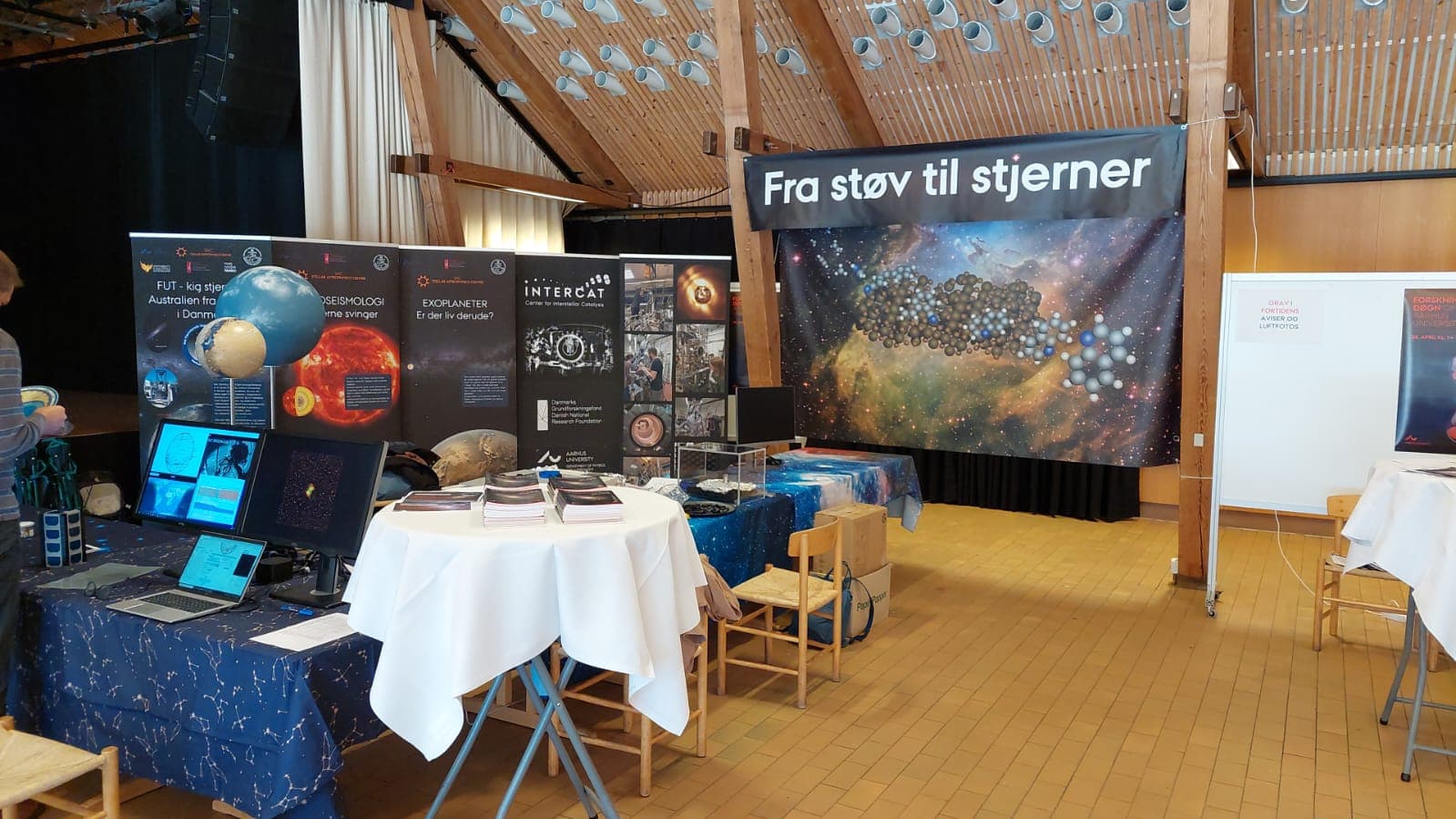
Our outreach stall! Complete with banners and rollups.
For this day, my colleagues (Laura, Signe, Steffen) and I have set up a stall and have brought some activities and demonstrations for people to try. We have tried to get a range of different things that will appeal to a wide audience. The first, and in my opinion the most exciting (maybe because I helped make it), is a fake vacuum chamber. This is a small game that because its Denmark of course involves Lego! The aim is to reach into the box and feel what Lego structure is inside and then make this structure yourself and then see how alike your version is. This is to replicate a scanning tunneling microscope (STM) (video that demonstrates an STM here) and explain the concept in a simple to understand and hopefully fun way.
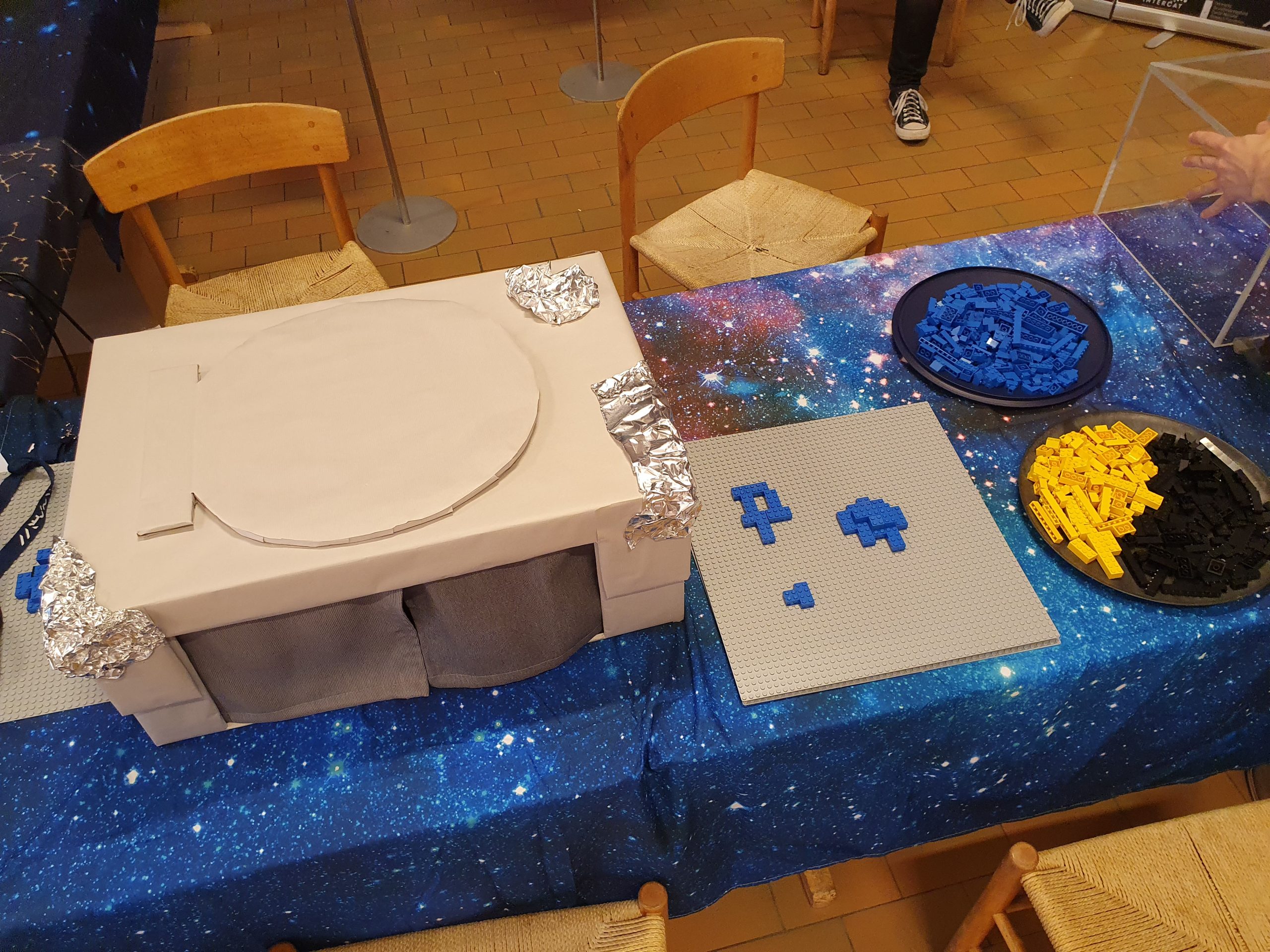
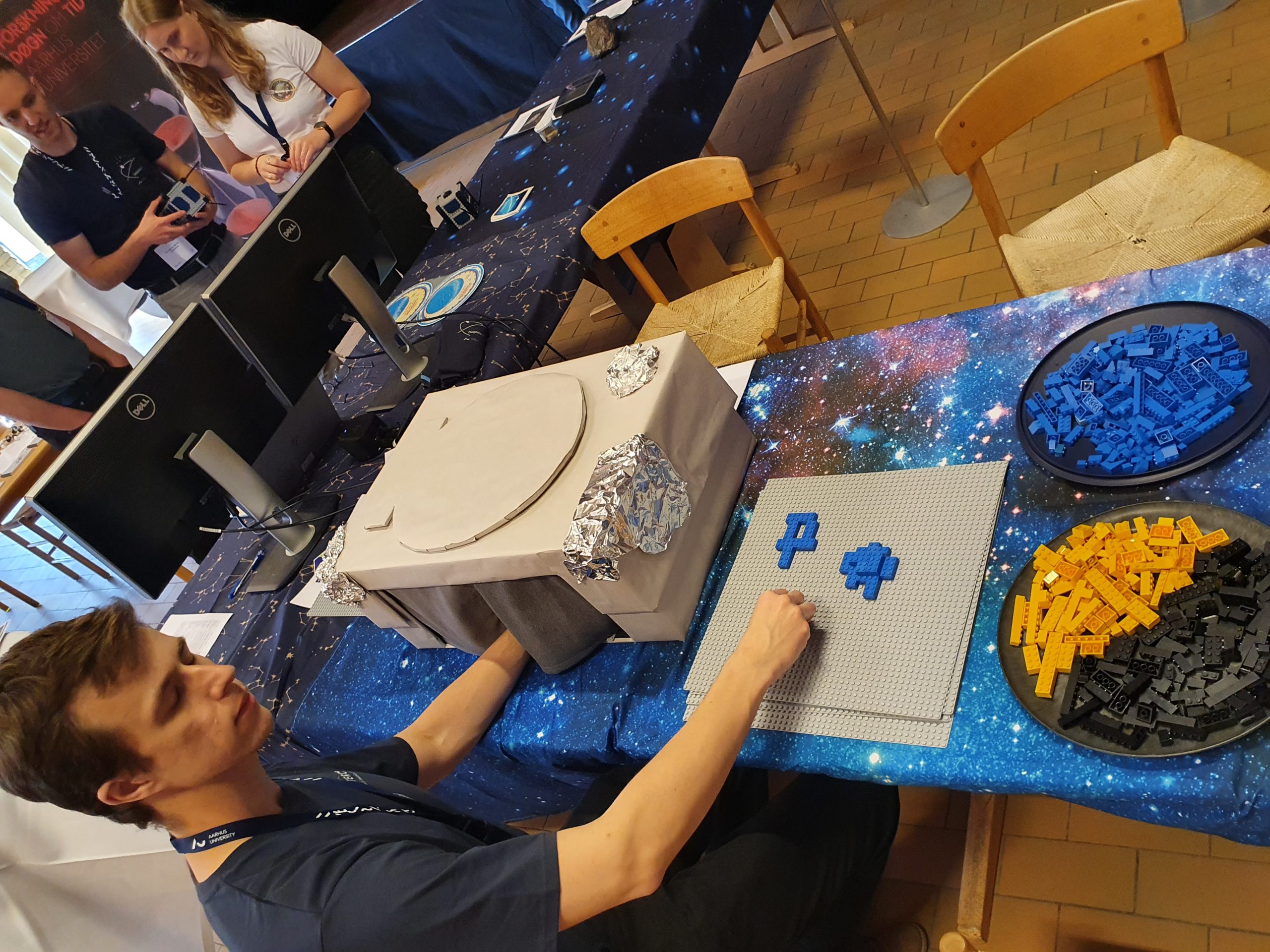
The replica vacuum chamber complete with Lego dust and Steffen giving it a try.
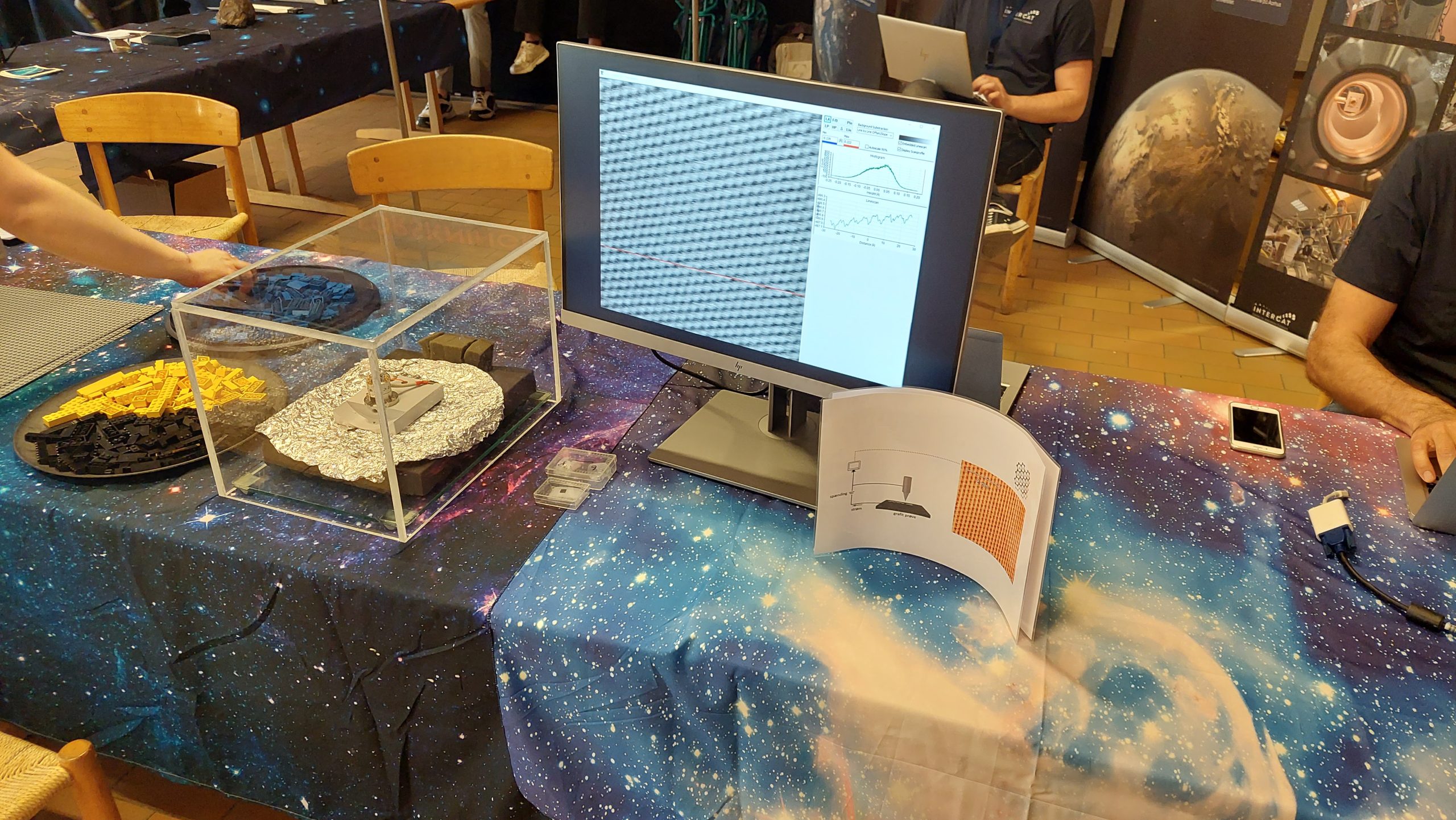
Our STM in the left and screen showing the atomic structure.
To compliment this we have also brought a real STM that has a video with it that shows how it allows us to see atomic structures. In this case, it is scanning on graphite and will show what we are able to do when investigating the formation of molecules on a surface.
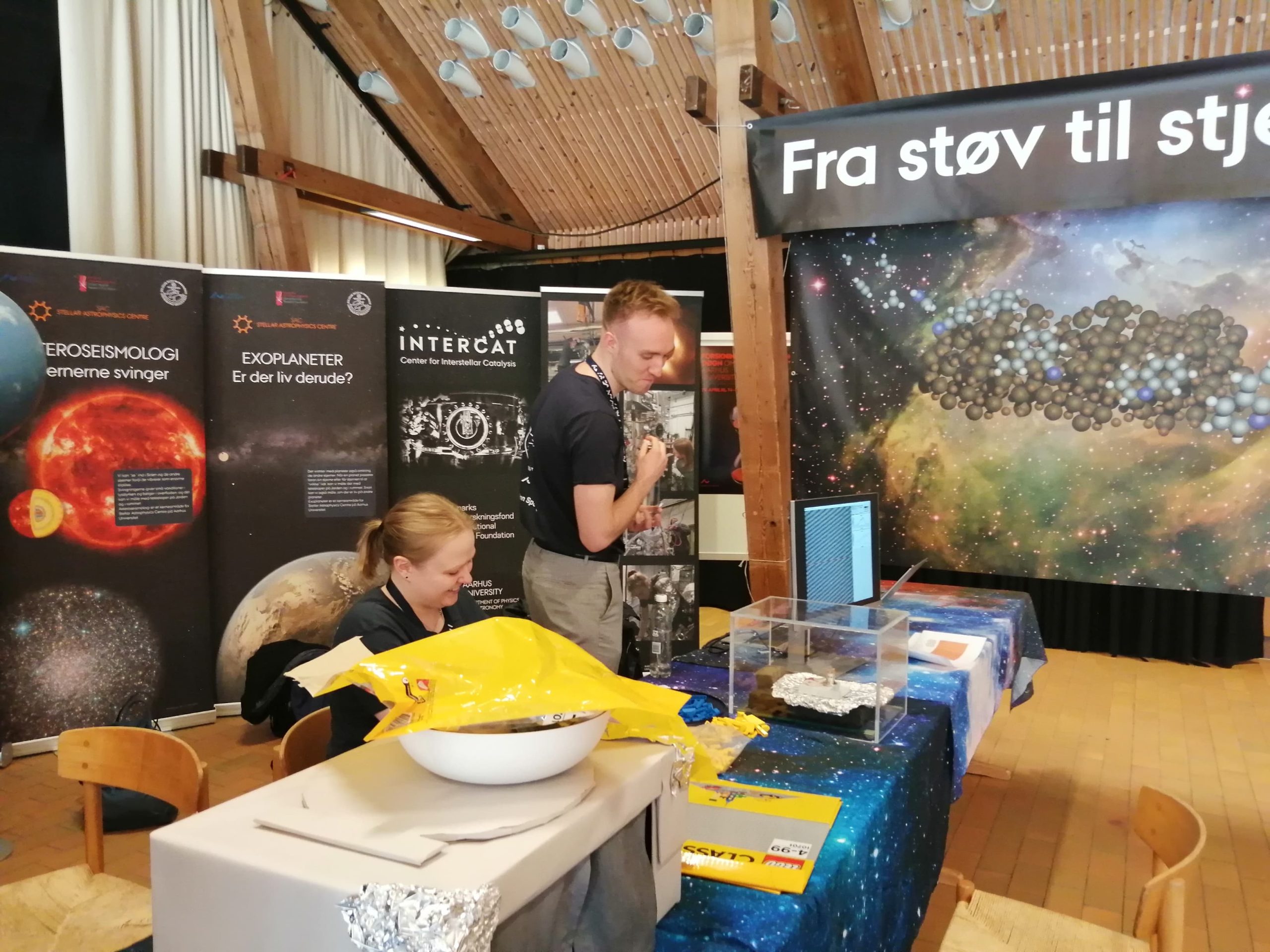
We have also brought two rollups that demonstrate what the laboratory looks like and one with links to our Twitter and YouTube. Finally, we made a large banner, which graphically shows how molecules can form on a grain surface.
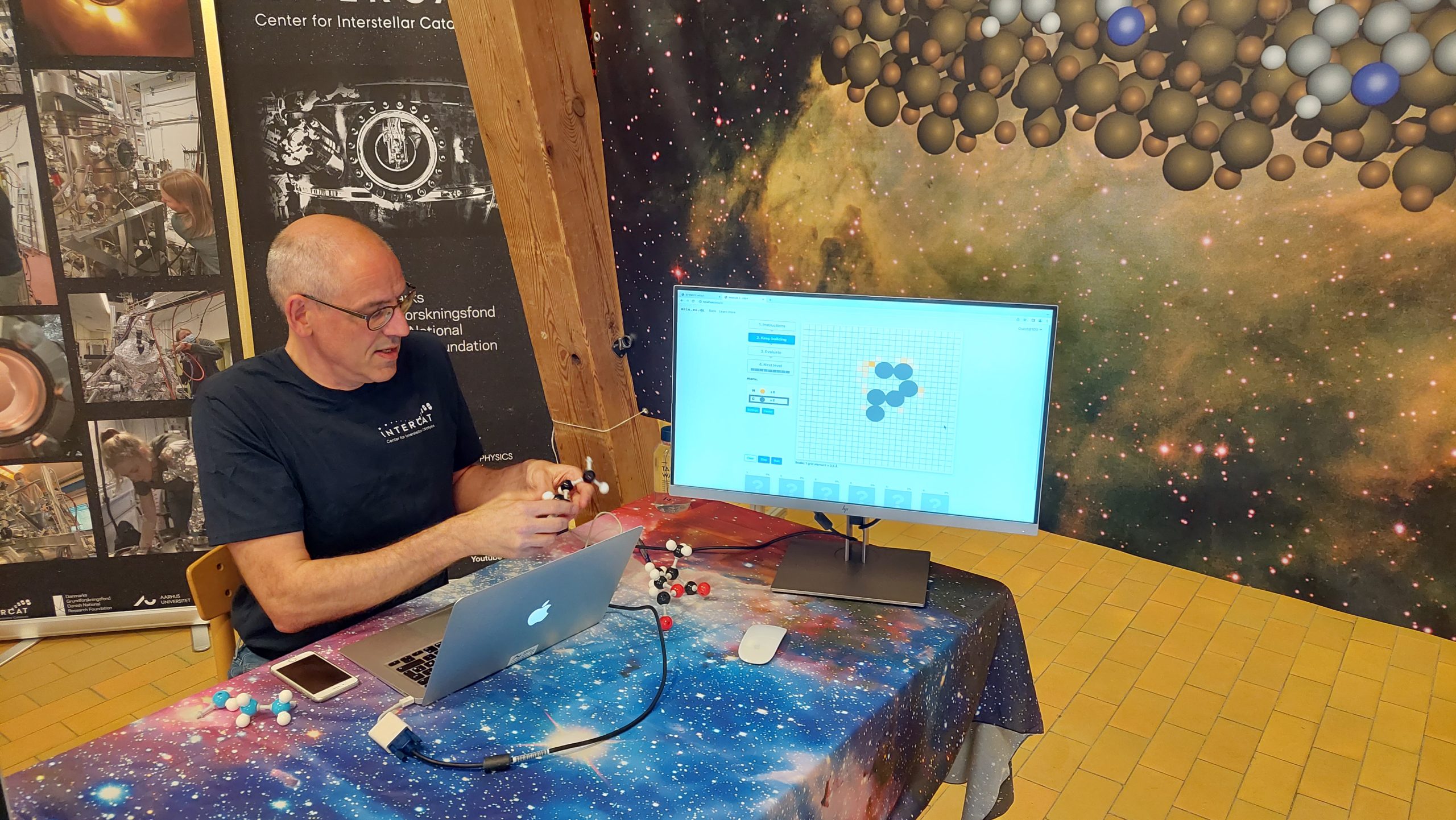
Bjørk and his game
Up to now, I have only talked about the contributions from the experimental group (as I am biased) but it would be remiss not to talk about our other collaborators. Firstly we have Bjørk, who as I am writing this is currently sat to my left busily setting up his contribution. He is showing how our theory group can use computer models to find different structures and chemical arrangements via a game he has made and I will try myself shortly!
To my right is the Stellar Astrophysics Centre who we have partnered up with for this event. They deal not with dust and organic chemistry, but with stars, as the name suggests. We obviously deal with different areas of space but they are very much linked. They have brought information on cube satellites such as Delphini and the currently running DISCO project that aims to launch these small satellites into orbit. They also have lots of information about stars and the sun and how these are modeled, observed and researched, but I will link to their page here if you want to know more, as I feel underqualified to talk at length about their research!
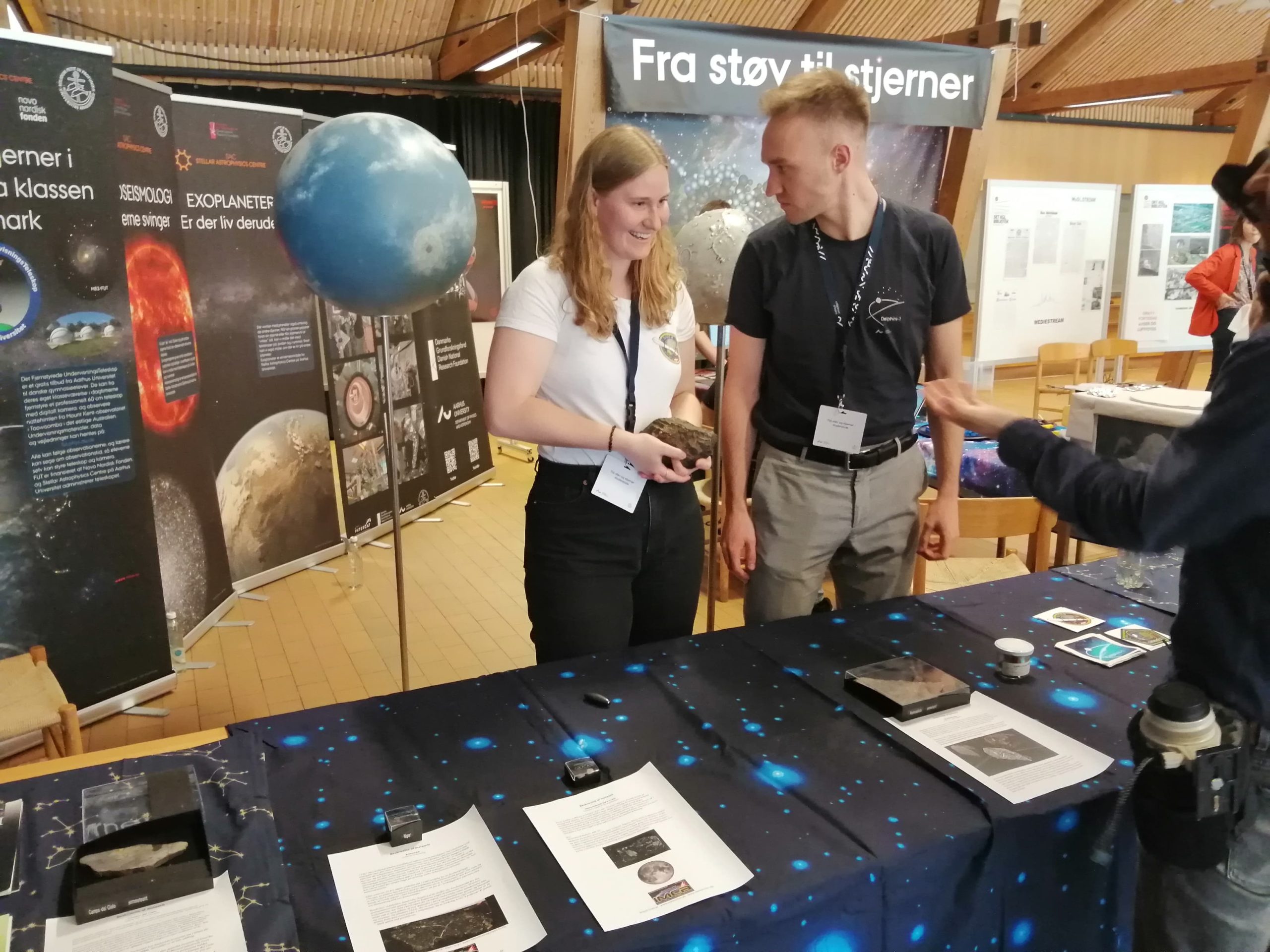
Stellar Astrophysics Centre
I hope anyone who comes to see us has a great time and enjoys the outreach events we will be running in the future but for now, I need to get back to talking to people about dust in space!

Don’t really understand it all but well done!